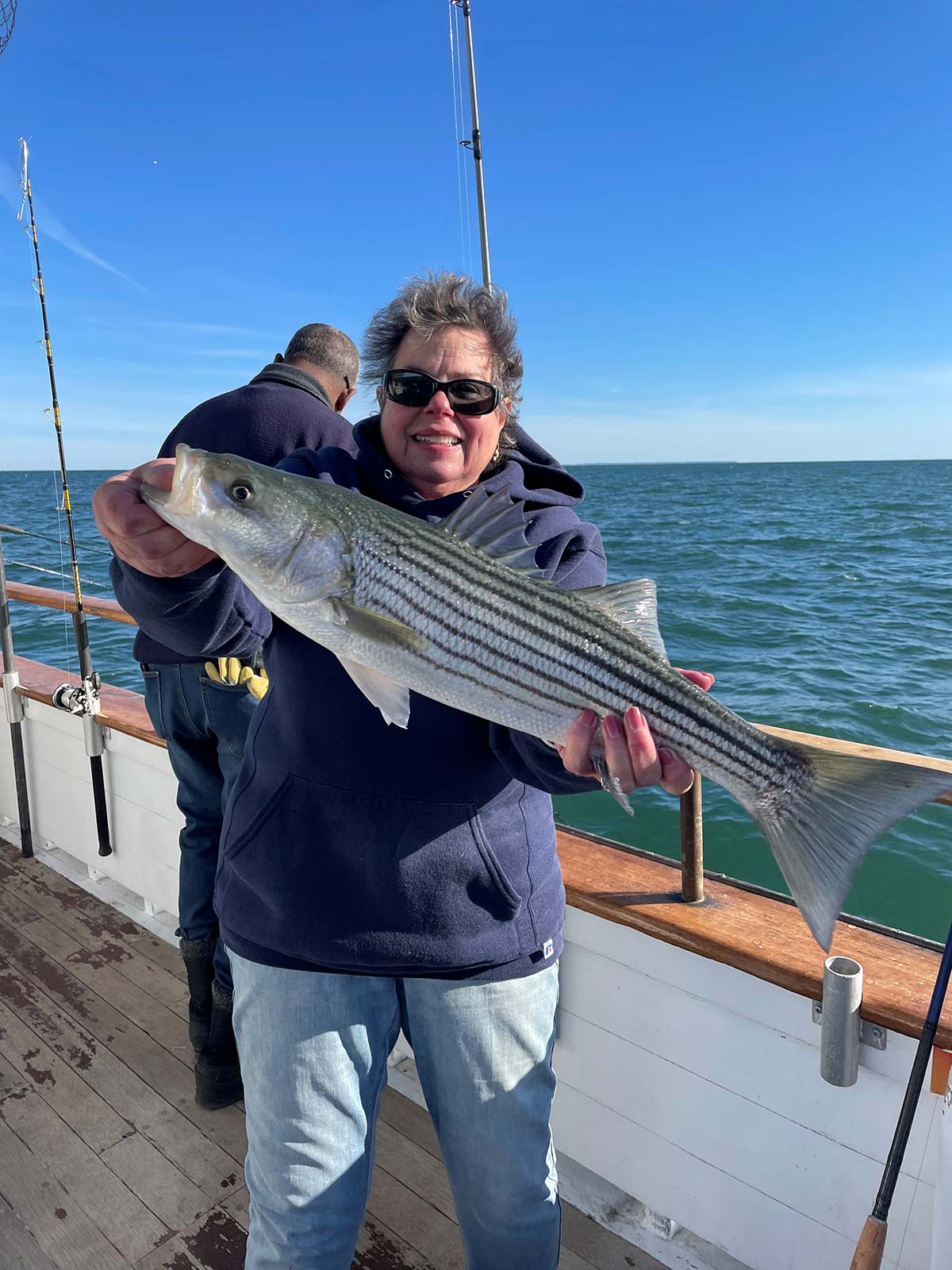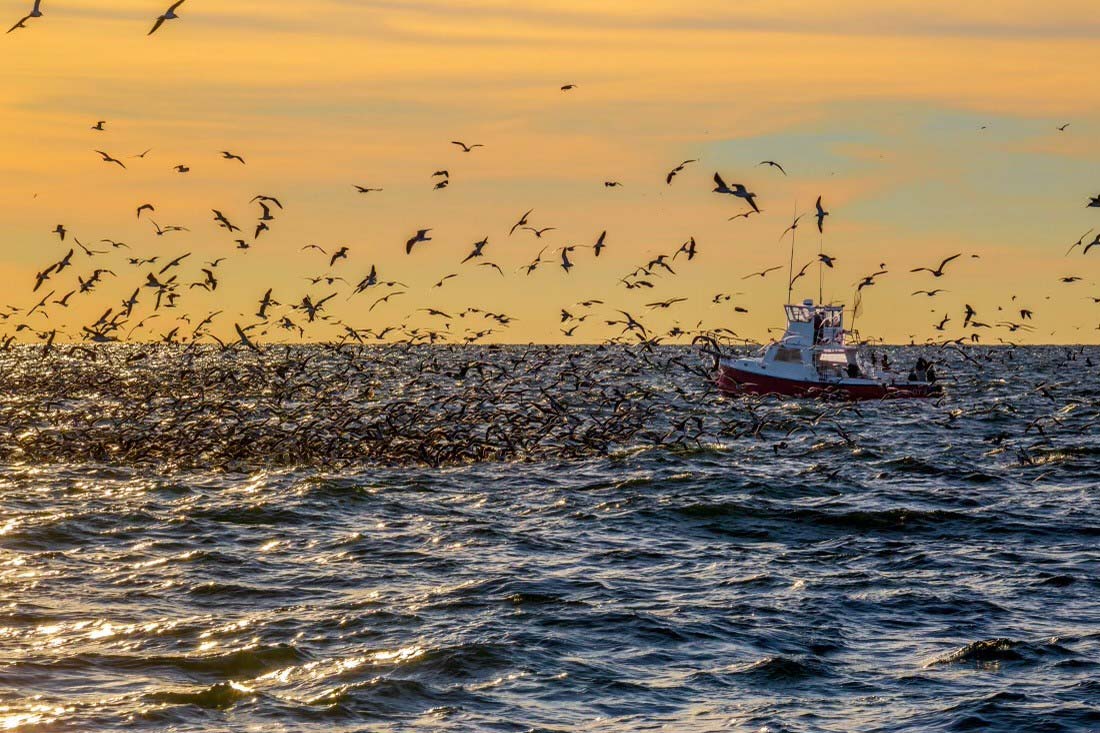
The basics of jigging for striped bass in the Northeast.
When striped bass fishing from a boat, several techniques consistently deliver. Using bait such as live eels or bunker, bunker chunks, worms and clams will get it done, and so will trolling mojo’s or tubes. Another method that works is my personal favorite—jigging. I especially like jigging because you can do it from a party, charter, or private boat and use lightweight tackle. Jigging works best during the daylight hours and can be utilized in every location where bass can be found, from Maine to Delaware and everywhere in between.
If you don’t see birds diving and fish breaking water, you should fish by location, meaning rips, eddies, underwater boulders, or where currents converge. Sometimes the bass will be busting the surface, chasing bait, a sight that will get your adrenalin pumping! If you find yourself in a similar situation, remember the larger stripers are lazy and usually hang out close to the bottom to eat the pieces of bait that fall there. So keep your jig “in the big fish zone” close to the bottom structure. Fishing near the surface will generally mean lots of action, but with smaller bass.
When jigging for stripers, one of the best techniques is squidding, although the proper retrieve gives the impression of a sand eel. Either underhand cast away from the boat or let your jig fall straight down to the bottom and then take about 10 to 15 cranks on the reel. If nothing happens, free spool the jig, letting it flutter back to the bottom, and repeat. The jig will often be hit on the way down, so be prepared, and if you feel the fish, quickly set the hook. Remember not to move the jig up and down, near the bottom, or you’re more apt to get dogfish.
There are various shapes, colors, and sizes of jigs on the market today. Some will be the plain, shiny chrome types like Ava and Diamond jigs, while others will be hammered, with different ones working better on different days. The single hook variety is best for easy and safe release. You can also replace the standard hook with a sharper, stainless steel one. Suppose you want to be sporting, close or file off the barb for a no-damage release if the fish is too large or small. Don’t forget to follow your state’s regulations.

Bringing more than one type, color, and size jig is a good idea. Depending upon the water depth and tidal speed, I use jigs from 4 to 7 ounces (113 to 198 grams). The jig color can also make the difference between success and failure. I like a gold on cloudy days, while silver is the way to go on bright, sunny days. On other occasions, a plain versus hammered finish works best. Keep an eye on which type is doing well for different anglers and imitate whichever type is catching. Last season I was fishing and the angler right next to me was having no luck while I landed several fish, keeping my single fish limit. The fellow couldn’t understand why he didn’t have a hit. I pointed to his jig and told him he was using a hammered jig, but the fish wanted a plain finish that day. He immediately changed over and landed a keeper on the very next drift.
Some may classify jigging as “work,” but not if you have the correct tackle, meaning line, rod and reel. I prefer a lighter conventional composite setup and use a 7-foot Shimano Terez rod and an Accurate BX-400 single-speed 4:1 gear ratio reel spooled with Shimano Power Pro 30-pound braid. If your reel has a higher retrieve ratio, remember to crank slowly. If using braid, tie an Albright knot to attach an approximate 6- to 7-foot topshot of mono or fluorocarbon.
Other skilled jig captains suggest casting uptide and retrieving your jig back or dropping the jig to the bottom and then swimming it toward the boat. There is no exact science to this, but when one method isn’t working, try switching sides of the boat because you never know when a linesider might want a different presentation. Most captains also prefer a conventional reel setup, as they are stronger and get the fish to the boat with minimal damage, which is especially important to release the fish unharmed.
A great advantage with jigging is that it works for the entire season—start to finish. I’ve caught bass on jigs from May until the closing day. It’s the norm to land stripers on jigs throughout the season due to a large number of baitfish. Check the ads in The Fisherman for boats that run jigging trips for striped bass and you’ll see why jigging is my favorite. .




